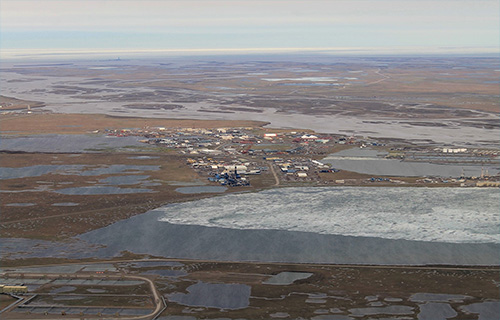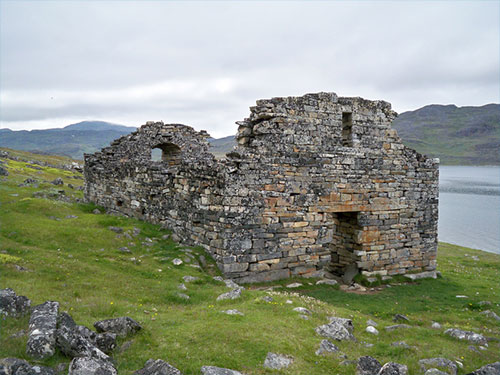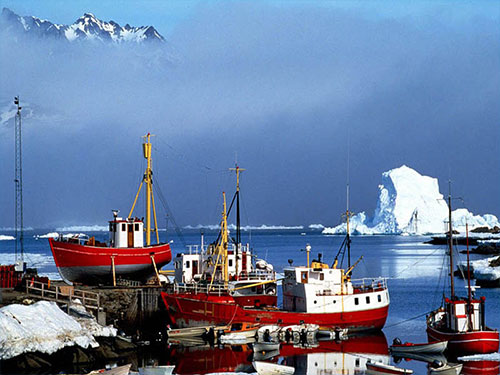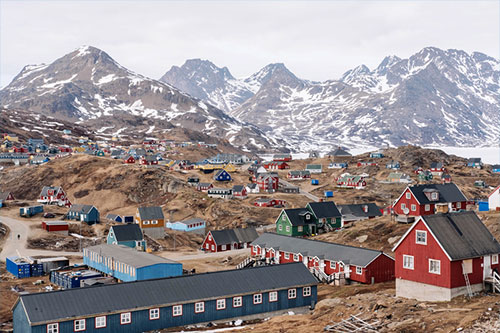Alaska for Greenland?The US considered it after WW IIBy DAVE KIFFER August 20, 2019
The cost of maintaining its "territorial colony" in the north was high and many in the Federal Government considered it unlikely that Alaska would ever be able to economically support itself, let alone get enough population to support statehood in the vast territory.
But back in 1946, the US government was still interested in Greenland - which has been a part of Denmark since 1814 and is semi-autonomous under the Denmark monarchy. After the land swap went nowhere, the US proposed buying parts of Greenland for $100 million in gold bullion, according to documents in the National Archives accessed by Jyllands-Posten. According to a 1991 story from the Associated Press, the proposed purchase of parts of Greenland first came up in November of 1945. Then In April of 1946, State Department official John Hickerson attended a meeting with the Joint Chiefs of Staff and learned that the military felt "that our real objective as regards to Greenland should be to acquire it by purchase from Denmark." ″The committee indicated that money is plentiful now, that Greenland is completely worthless to Denmark (and) that the control of Greenland is indispensable to the safety of the United States,″ Hickerson said in a memo in the National Archives.
In his memo, Hickerson said he told the Joint Chiefs that he doubted the Danes would actually sell any of the island, despite the fact that only about 600 Danes lived in Greenland at the time. But William Trimble, a state department expert on Northern European Affairs took a different tack in a different memo, that is also preserved in the archives. ″In the final analysis, there are few people in Denmark who have any real interest in Greenland, economic, political or financial,″ Trimble wrote. Trimble was the one who had suggested a land swap involving specific military base sites in Greenland and much of the land in the Point Barrow district. Trimble noted that the Greenland sites would be ″valuable bases from which to launch an air counteroffensive over the Arctic area in the event of attack.″ In June of 1946, Secretary of War Robert Patterson wrote a memo to the state department noting that ″it might be a good idea to take prompt action toward securing from Denmark (even to the extent of purchasing the entire island, if necessary) the military rights which have been outlined by the Joint Chiefs of Staff.″ ″Our needs ... seemed to come as a shock to Rasmussen, but he did not reject my suggestions flatly and said that he would study a memorandum which I gave him,″ Byrnes reported in a telegram that is also in the archives. That is where the trail ends. There is nothing in the archives that indicates if the Danes made a formal response or a counter proposal.
But within a few years, the United States did sign a defense treaty with Denmark and, as part of that treaty, was granted two Air Force bases, Thule and Sondestrom, on the island The Thule base was built in 1952, originally as a refueling base for long range bombers. In 2019, Thule is a ballistic missile early warning site and a satellite telemetry station. The Sondestrom base is a support base for Thule. So the word that President Trump recently floated the idea of purchasing Greenland for strategic purchases, harkens back to earlier efforts to secure the giant, ice covered island, efforts that would have irrevocably changed the future of Alaska.
Editor's Note:
On the Web
Contact Dave at dave@sitnews.us Dave Kiffer ©2019 Publication fee required. © Representations of fact and opinions in comments posted are solely those of the individual posters and do not represent the opinions of Sitnews.
|
|||||||





